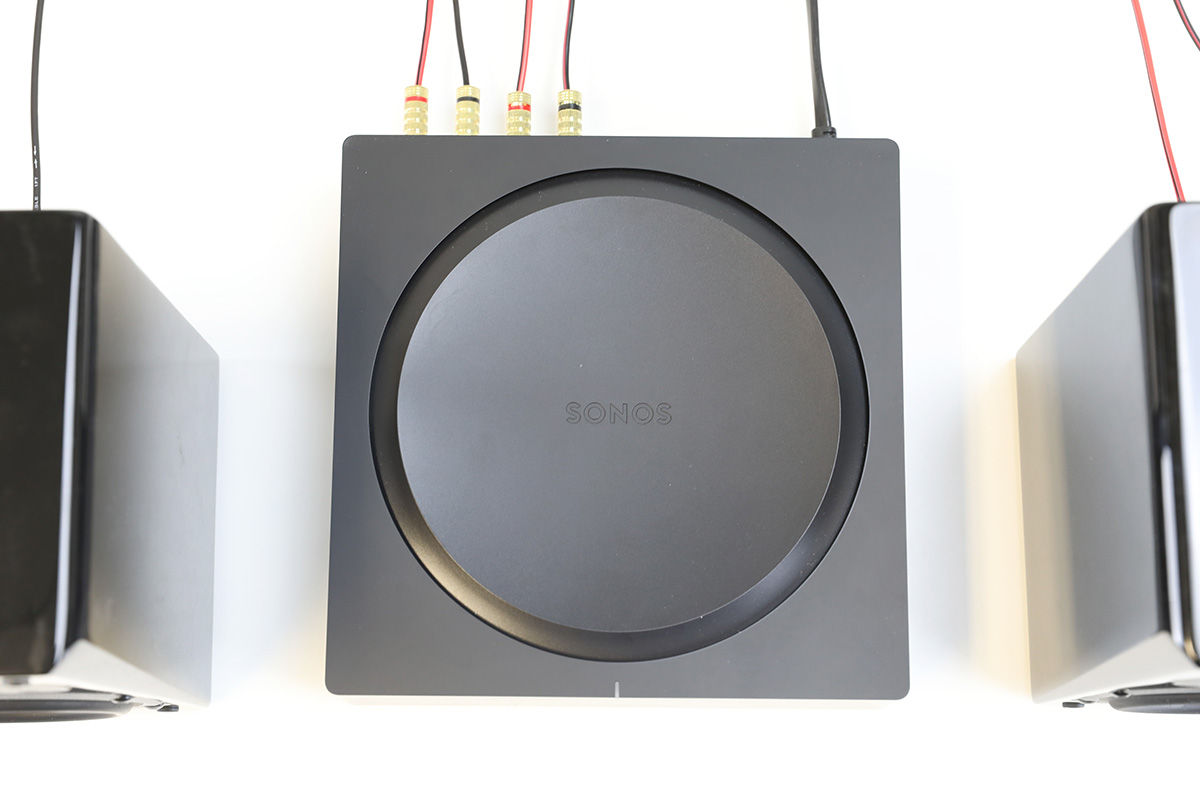
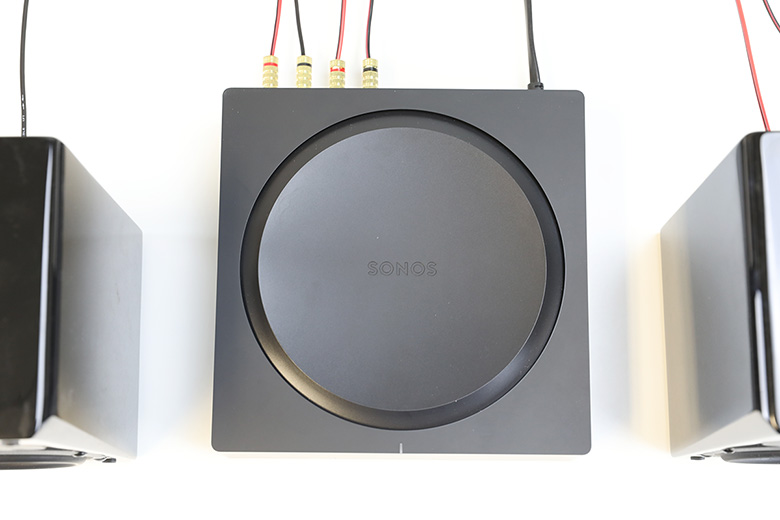
The Master Switch


The Master Switch
Weight: 4.6lbs
RMS: 125W/8Ω
DAC: Yes
What We Like: Excellent sound quality, a total breeze to set up and use.
What We Don't: No optical input, not great for home theater.
See the Sonos Amp
Sonos don't just make great wireless speakers. The company's old Connect:Amp was long been the secret weapon of custom home theater installers, and if you think the guys at Sonos didn't notice this, you're dreaming. Hence, the Sonos Amp, a versatile upgrade on the original Connect:Amp designed to power both hi-fi speakers and home theater setups. In this review, we break down the Sonos Amp's sound, design, packaging and accessories, specs and more. To see how it stacks up, check out our list of the best stereo amps.
The Sonos Amp is a bit like Dwight Howard, the basketball player. He's played on seven teams in fifteen years and is generally regarded as one of the NBA's most frustrating players - a guy with all the physical gifts who just couldn't cut it. Especially when it came to small things like being nice to teammates and coaches. Because like Howard, the Sonos Amp is really good at a few things, and a complete mess at everything else. We'll talk about what it gets wrong below, but for now, let's talk about what it gets right. Trust us: when everything is clicking, the Sonos Amp feels like the Dwight Howard Superman dunk. You'll be telling your friends about it for years.
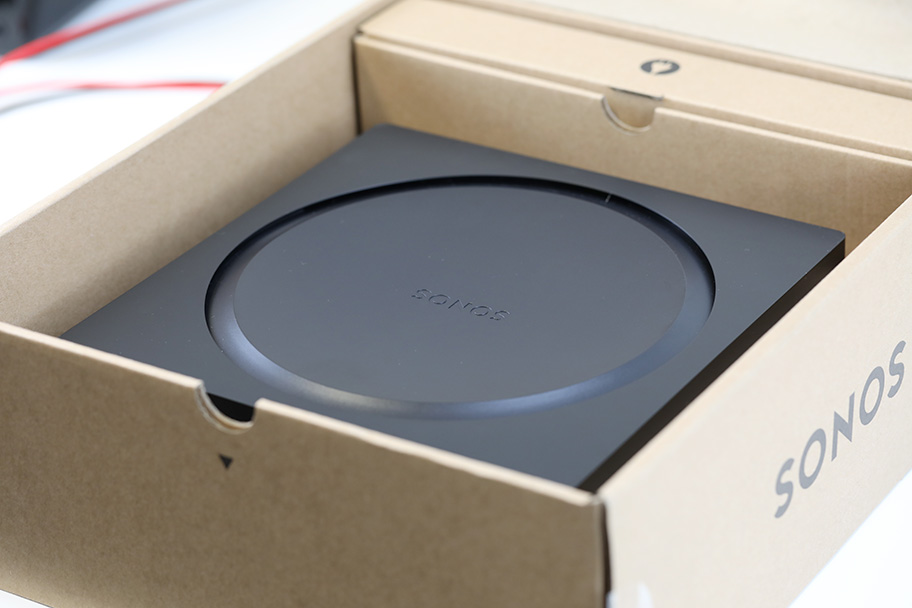
The Sonos Amp's primary use is within a hi-fi setup. If you have two passive speakers, like a pair of bookshelf or floorstanding speakers, all you need to do is connect to the Amp with speaker wire. This gives you a fully wireless hi-fi system, and it is an absolutely splendid way to enjoy music. The Sonos Amp has a Class D digital amplifier that pumps out 125 watts per channel at 8 ohms (versus 55 watts for the original Connect:Amp). Sonos didn't respond to our queries about whether this was RMS or peak power (those are explained here), but it wasn't an issue. We found that, no matter what speakers we used, the Amp had absolutely no trouble driving them.
The speakers we used to test the Sonos Amp included a pair of bookshelf speakers, the Audioengine HDP6 (full review here), as well as a pair of demanding SVS Ultra Towers (full review here). In both cases, we didn't have an issue getting enough volume or power. While the Sonos Amp was clearly more comfortable driving the bookshelf speakers, the big SVS floorstanders didn't pose too much trouble. Then again, that's hardly surprising. The Sonos Amp boasts a sizeable 125 watts of power, and should be more than enough to drive all but the most hungry speaker systems. You can also use the amplifier to drive ceiling or architectural speakers - although this is one aspect we didn't get to test. We love our testing room, but unfortunately, our landlord wasn't wild about us cutting holes in the ceiling…
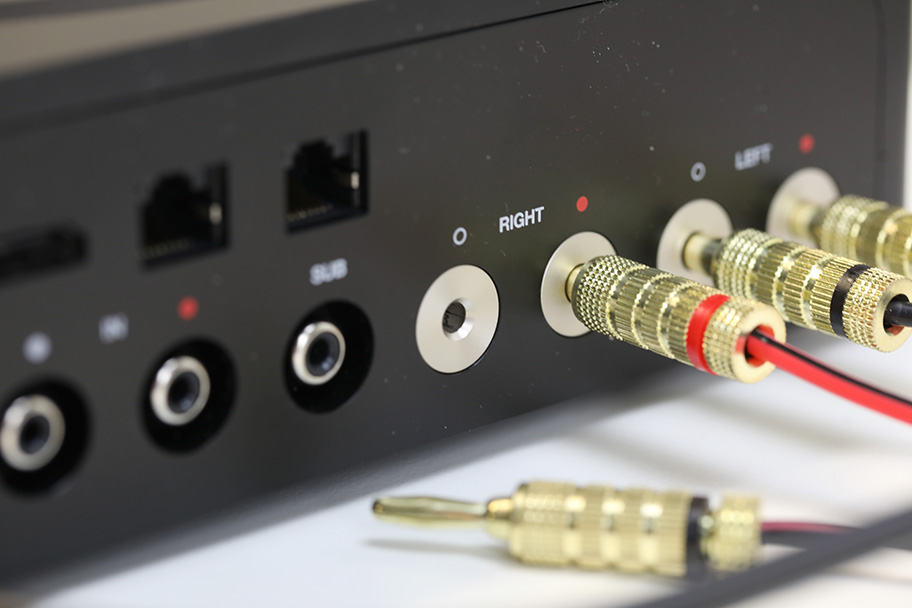
The Sonos Amp features a subwoofer output for creating a full 2.1 system. You may find this useful, if you want some extra bass; the Sonos Amp isn't a particular heavy system down low, and doesn't put out particularly punchy bass. We don't necessarily mean this as a negative; the low-end is clear and detailed, with a good level of control. This is particularly true in the mid-bass, where you'll find things like cellos, some guitars, and occasionally kick drums. These elements, and others in this particular region, felt competent and assured. More importantly, they were fun - controlled without being chaotic. And you can always add the aforementioned subwoofer if you want extra kick down low. Perhaps the Sonos Sub might be an option - right now, it's one of the best and most accessible subs available.
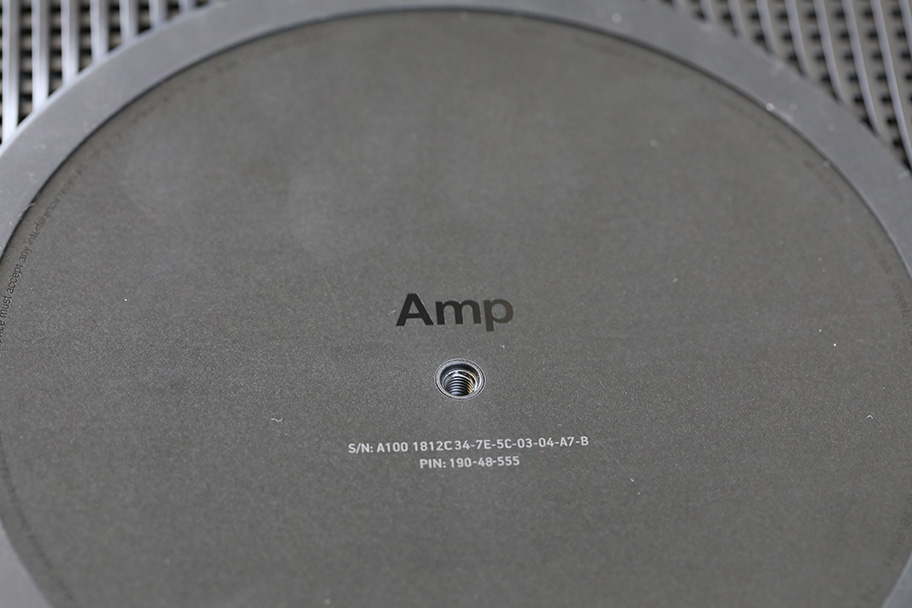
Outside of the bass, you'll find clear definition and robust sound, with a high level of detail. Vocals sound terrific on this amp, and we really got the sense that there was weight behind the music. However, despite the Amp's impressive nature, it doesn't have the sound quality of something like the NAD D 3045, which was clearly designed by people who have been making stereo amps for a very long time. Against other leading stereo amps, it doesn't quite have the audio chops to compete, and misses the mark by a small margin. But for the most part, the sound quality is excellent. The Sonos Amp costs $599, only a little less than the $699 NAD, and we never felt like we were losing out.
There's a line-in for an external DAC, and we found ourselves using it whenever the Amp showed any problems with the Wi-Fi - see below for details of this delightful quirk. There are also some basic EQ and subwoofer crossover adjustment features in the Sonos app. We'll go into this app in more detail below, but these functions are easy and intuitive, and make an audible difference. One slight bummer: there is no evidence of Trueplay here. Trueplay is Sonos' room calibration system used on their wireless speakers, like the Sonos One smart speaker (full review here). Sonos have made the quite reasonable point that they can't calibrate for your room if they don't know what kind of speakers you're using. If you enjoy using Trueplay, you may want to investigate some of the company's other wireless speakers.
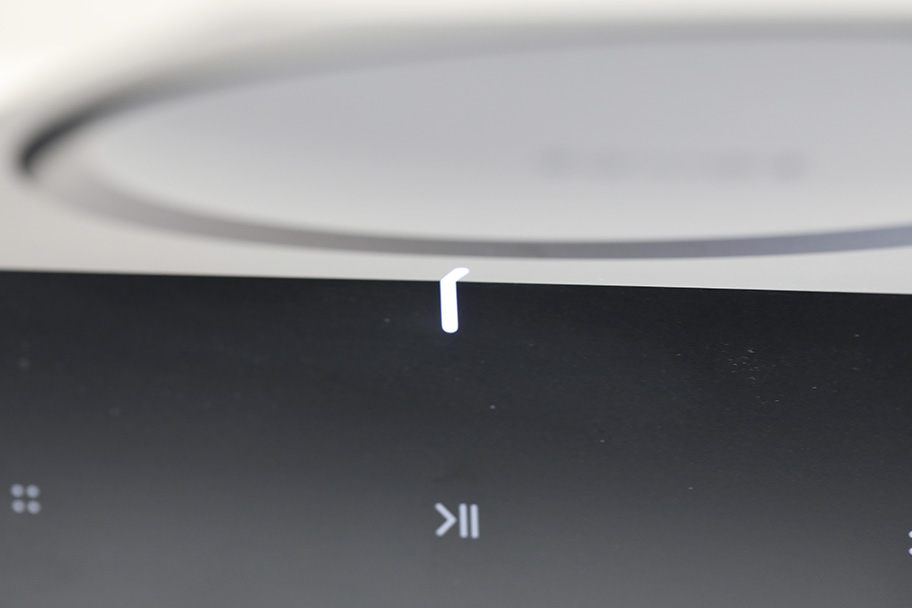
Here's the thing with the Sonos Amp: it's not just about music. Sonos have explicitly designed the Amp to be used in home theater setups as well… and this is where Dwight Howard stops doing Superman dunks and starts fighting with referees. See, the original Sonos Connect:Amp has long been beloved by custom home theater installers, as it allowed them to create what was essentially a wireless system. The upgraded Sonos Amp can do the same thing, but it has quite a few quirks that make it less ideal for home theater
Round the back of the Sonos Amp, alongside the speaker and subwoofer outputs, you'll find an HDMI ARC input (read more about this here). In theory, that allows you to connect the Amp directly to a TV and receive sound from it. It even has a digital IR port on the front, meaning you can control the volume with a regular TV remote. The idea, as far as we understand it, is to make an Amp - or several Amps – the center of your home theater universe. Unfortunately, it doesn't really work. If you'll permit our basketball analogy to continue, asking the Amp to handle home theater is a bit like asking Steph Curry to dunk over LeBron James. He could probably do it, but it's going to look awkward as hell. Also, he's going to get fouled. Badly.
Here's the thing about the Sonos Amp: it has no center channel. That means, if you want to use it to power the front speakers in a home theater setup, you're going to have to deal without a center. In a home theater setup, that can be extremely frustrating. Sure, you could go for a 4.0 or 4.1 setup – two front speakers, two rear speakers, and a subwoofer – but why would you? Why on earth would you go to all this trouble, when true 5.1 wireless home theater can be so much easier and less expensive? Hell, Sonos now sell dedicated 5.1 packages for around $1,650. If you were to try emulate that by incorporating a couple of Sonos Amps, you're looking at the same price and more effort. And now you know why everyone hates Dwight Howard.
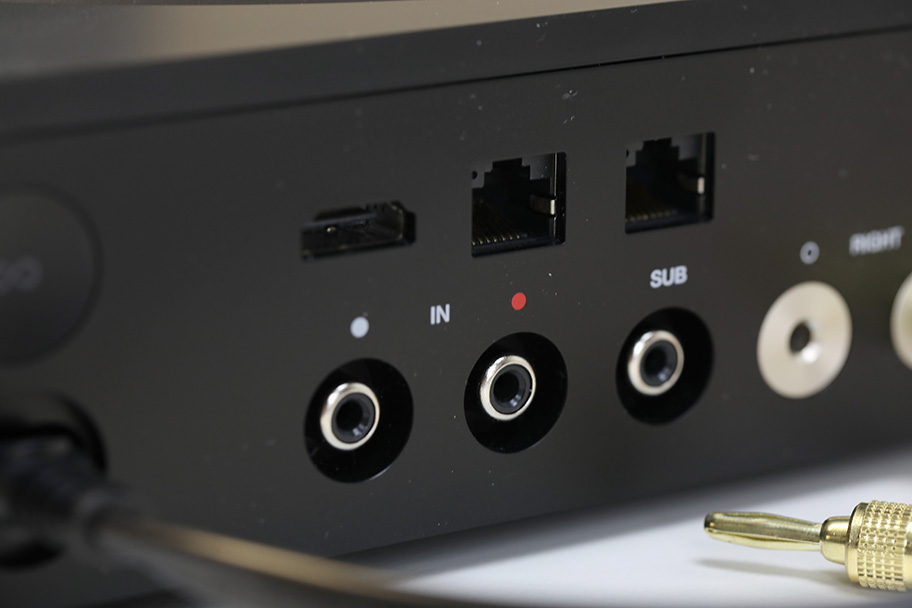
We wish the issues stopped there, but there's more. The Sonos Amp has no optical input. That means that it's almost impossible for the amp to transmit Dolby surround sound. It's a frustrating omission, and a weird one when you consider that the company already sells an HDMI-to-Optical adapter for $25. This shipped with the Beam soundbar – we remember it from our review model – but you don't get one with the Amp. We tried the Sonos Amp in our home theater testing room, and it just didn't make sense. It felt weird and ungainly, and like it was trying to solve a problem that we didn't actually have. It ran into exactly the same issue that other wireless amps, like the $399 Denon HEOS AMP, did and does nothing to solve it.
Are you beginning to understand what we mean? For music and hi-fi, the Sonos Amp is the business. But for home theater – and pipe down at the back there, because Sonos explicitly states that the Amp is designed to be used this way in addition to hi-fi – it just flubs. If you go through the effort to get connected, it sounds great. But at some point, you have to ask yourself why you don't just get a regular A/V receiver, and cut out the middleman. If you're desperate for wireless home theater, then a set up like the Sonos 5.1 package we mentioned would be much easier.
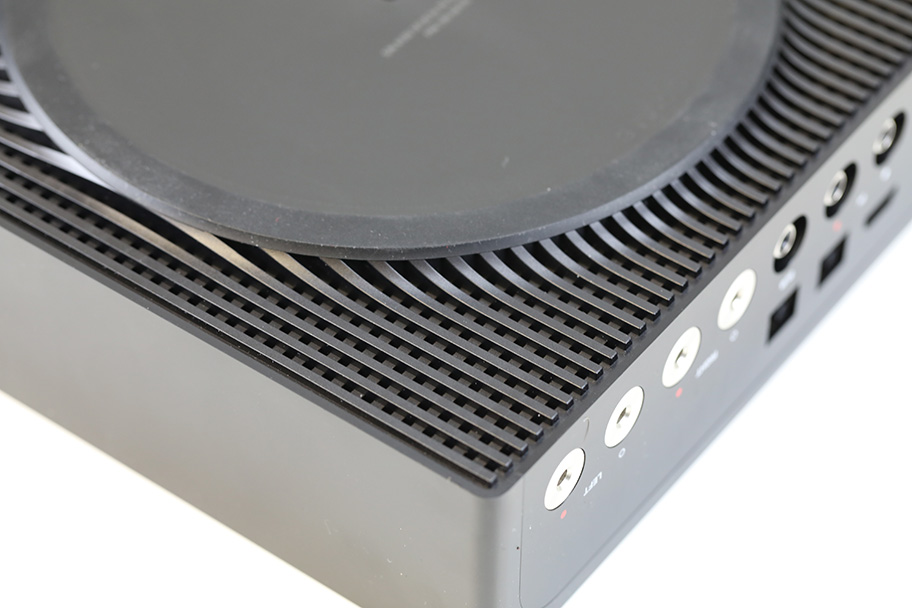
While the looks Sonos Amp doesn't move too far away from the big-black-box look that most amplifiers have, it has its own charm. The Amp is roughly the size of a cake box, and has the same level of polish in its presentation. Even if it probably doesn't taste as good.
The thing we want to draw your attention to most is how the Sonos Amp handles heat. Stick with us – this is pretty cool. Class D amplifiers, like the Sonos Amp, don't tend to run too hot, but they do generate some heat. Most amplifiers deal with this by having ungainly heatsinks or vents, which stops your brand-new amp from exploding. Sonos have vents, too, but you'll have to look a bit harder to find them. Notice how the amp is raised slightly when you place it on a surface? Turn it upside down, and you'll see that it rests on a vented plinth. This creates a space underneath the amp, which allows air to circulate. The air is pulled up through the unit and expelled through hidden vents around the circular indentation on the top. Isn't that clever? It takes one of the most ungainly aspects of an amplifier and turns into something that you don't even notice – and when you do notice it, you can't help but marvel at it. You may have guessed this already, but Sonos are really good at this kind of thing.
Thanks to that indentation, the Sonos Amp is fully stackable – if you are mad enough to use it in a home theater setup, you could easily place several of them on top of one another. We also love the subtle design hints, like the rounded corners and the indicator light. The L-shaped light is visible from multiple angles, and gives a real depth to the design. It also helps that the Amp is built like a tank. Plastic it may be, but you do not want this thing thrown at you in anger.
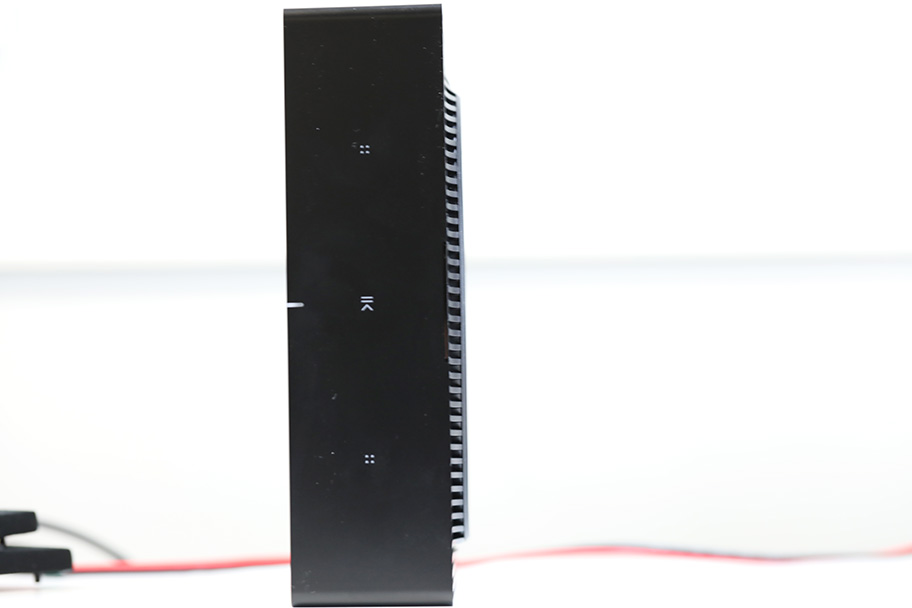
The Sonos Amp may have its issues, but there's one thing it truly gets right: setup and app control. Sonos have had the best app on the market for years now – a beautifully designed, effective piece of software that gives you exactly the information you need, when you need it. All you have to do to set up the Amp is plug it in, download the app, and follow the simple instructions. Total time, from plugging in to death metal at top volume is about 30 seconds. There's simply no other product right now, in any part of the audio world, that can beat Sonos for ease-of-use. It's just not gonna happen. Streaming from services like Spotify and Tidal is a simple process, and you can select the Amp directly from their respective apps. You can also listen to the services via the Sonos app itself, or stream music via Apple AirPlay 2. All of it is simple and intuitive. You can even tell the app to automatically switch to the line-in if a connection is detected.
However, we did run into a couple of glitches with the Wi-Fi. During the period we tested the Amp, we kept running into glitches and dropouts, where the Amp stopped being detected by our system. We resolved this by moving it a little closer to the wireless router, but it was a problem that we saw happen on two separate wireless networks. What's peculiar is that it's not a problem suffered by the Sonos One speaker, which performed fine even at large distances from the router. We aren't entirely sure what caused this, and we haven't had a chance to get hold of a second Amp to compare, but it's worth bearing in mind.
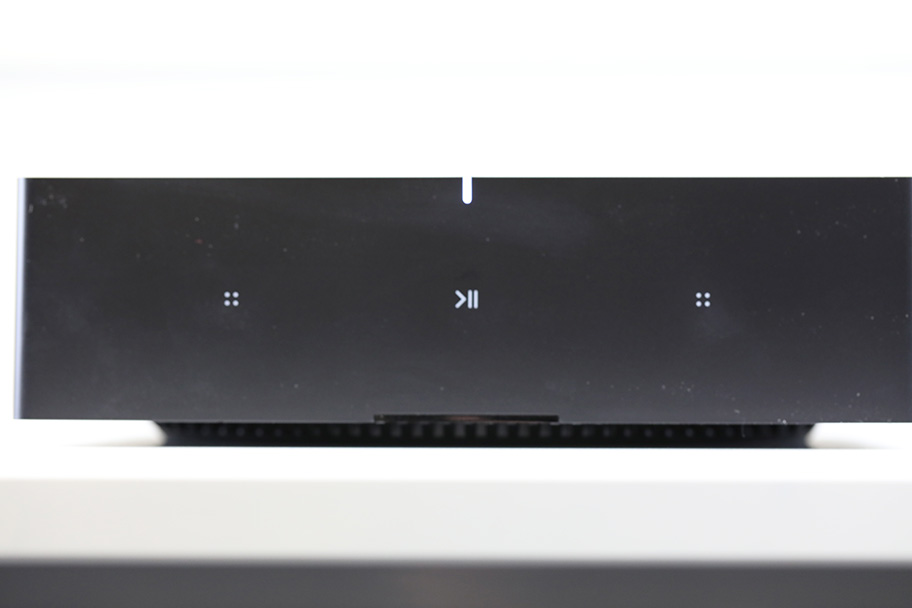
We also love the physical controls on the front of the unit. While you're more likely to use the app, the Amp does have a set of simple touch controls on the front. These are nothing more than two-volume controls and a play-pause button. They respond to touch in an instant, with a satisfying blip sound that lets you know you've pressed them. It's the same type of control layout we saw on the Sonos Beam (full review here) and it's great if you want to pause music in a hurry
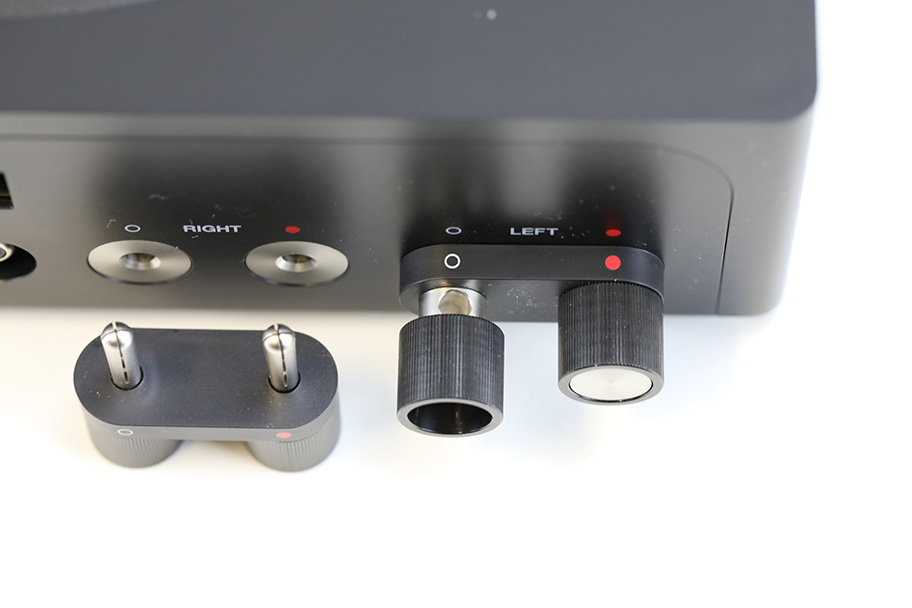
The Sonos Amp doesn't come with a remote – hardly surprising, given the excellence of the app. What it does come with is an absolutely genius accessory that we wish more amp makers thought to include. The speaker connections on the back of the Amp are set up to receive banana plugs by default (these are what banana plugs are). If you don't like using banana plugs, Sonos helpfully provide adapters that can be pushed directly into the speaker posts, and which unscrew to allow you to insert speaker wire. Once again, Sonos prove that nobody can beat them when it comes to usability and design. The inclusion of these adapters is such a simple thing, but it makes all the difference.
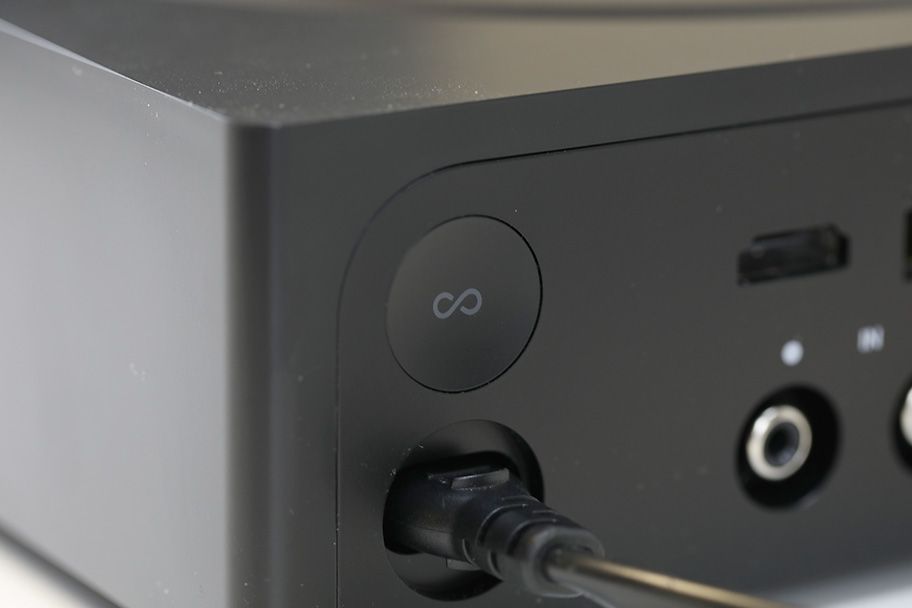
| Stereo Amp | Price | Weight | RMS* | DAC? | Peak** | Dimensions |
|---|---|---|---|---|---|---|
| Sonos Amp | $699 | 4.6lbs | 125W/8Ω | Yes | Unknown | 8.5" x 8.5" x 2.5" |
| Denon HEOS AMP | $499 | 6.2lbs | 140W/8Ω | Yes | Unknown | 8.7" x 8.4." x 3.7" |
| Onkyo A-9110 | $349 | 15.4lbs | 50W/4Ω | No | Unknown | 17.1" x 13" x 5" |
| NAD D3045 | $799 | 5.7lbs | 60W/8Ω | Yes | 80W/8Ω | 10.4" x 9.,3" x 2.8" |
| Sonos Port | $449 | 1lb | N/A | Yes | N/A | 5.4" x 5.4" x 1.6" |
*RMS = RMS/Continuous Power
**Peak = Peak/Dynamic Power
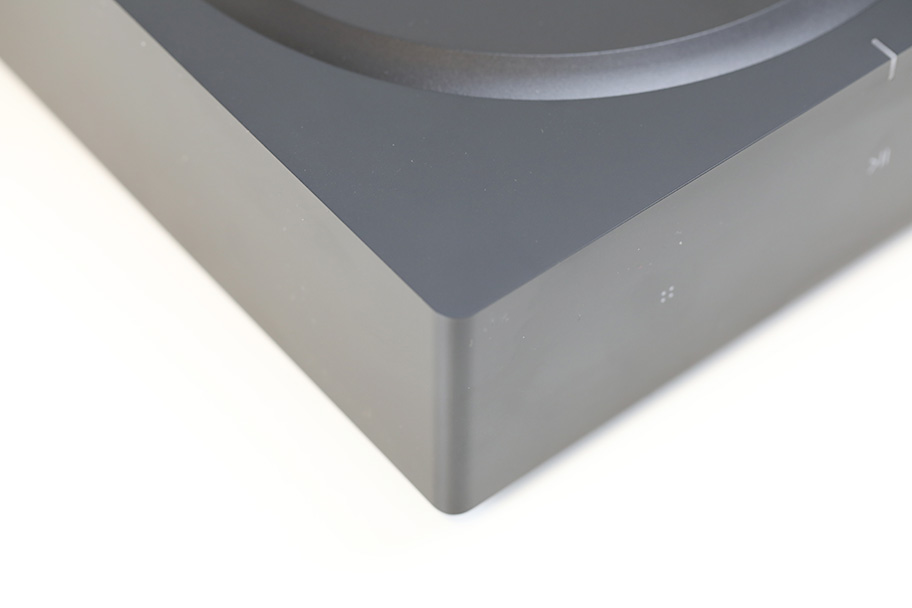
First on our list as a competitor: Denon. Now, we love Denon. In our opinion, they make the best A/V receivers on earth. But if you put the Denon HEOS AMP up against the Sonos Amp, the Sonos wins. It's not even a contest. Yes, the HEOS AMP may cost $200 less, but it's also markedly inferior product – far more than the price difference would suggest. It's ugly as hell, with a lumpy, misshapen appearance. The HEOS wireless system doesn't hold water compared to the Sonos, even it offers 140 watts of power, versus 125 for the Sonos. In a world where the Sonos Amp didn't exist, the HEOS would probably be a fine choice, but we have to side with Sonos on this one.
There aren't many dedicated wireless amplifiers out there for us to compare the Sonos Amp to. What we can do is compare it to a stereo amplifier that at least puts quite a bit of emphasis on wireless listening. The NAD D 3045 costs $799, versus $699 for the Sonos. While it doesn't have Wi-Fi connectivity, it does have two-way aptX Bluetooth, meaning you can stream both to and from the amp. You get optical input, headphone amp, and phono preamp – things the Sonos Amp doesn't include – and the sound is a significant step up. If you aren't too bothered about losing the Wi-Fi functionality, we strongly recommend picking the NAD. It's a superior stereo amp.
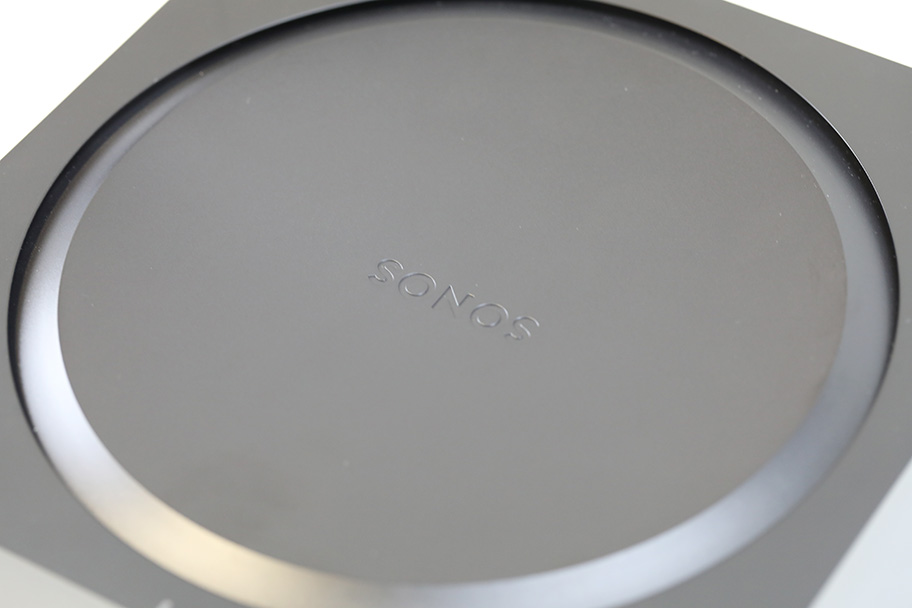
Moving even further up the scale, check out the Bluesound POWERNODE 2i. Like the Sonos Amp, this is a fully Wi-Fi-equipped amplifier, boasting 120 watts of power. You can control music through Bluesound's BluOS, as well as Apple AirPlay 2. There's also full virtual assistant functionality, meaning you can utilize Amazon Alexa and Apple's Siri. We really like the POWERNODE 2i; it may not boast the simplicity and ease of the Sonos Amp, but it offers incredible sound quality in a beautiful package. If you have extra money to spend, it's well worth the additional cost – $799, versus $599 for the Sonos.
The Sonos Amp is a replacement for the old Sonos Connect:Amp, which has now itself been discontinued. That makes the Amp under review the only amplifier that Sonos make. They do, however, make several other hi-fi components, one of which is the newer Sonos Port. It’s essentially a music streamer that can be connected to any existing amplifier or DAC, turning your entire system wireless. It’s a great idea, and the Port works well, but we don’t think the sound quality is very good at this point. And at around $450, it’s an expensive option, too. If you are interested in turning your system wireless, and you already have an existing amplifier, then you should check out our list of the best music streamers available. They will help you find a much more affordable and better sounding option.